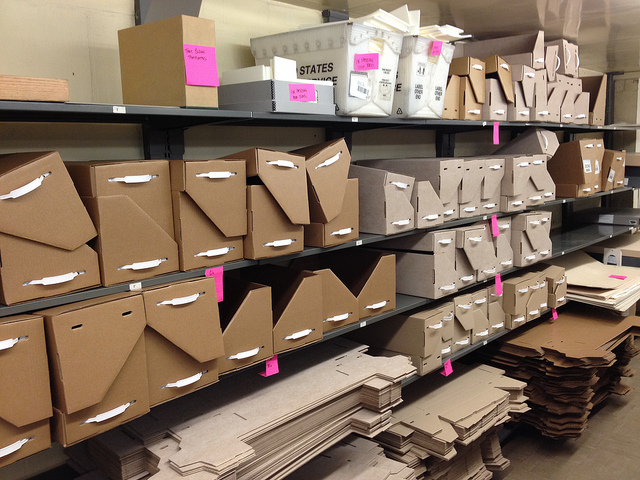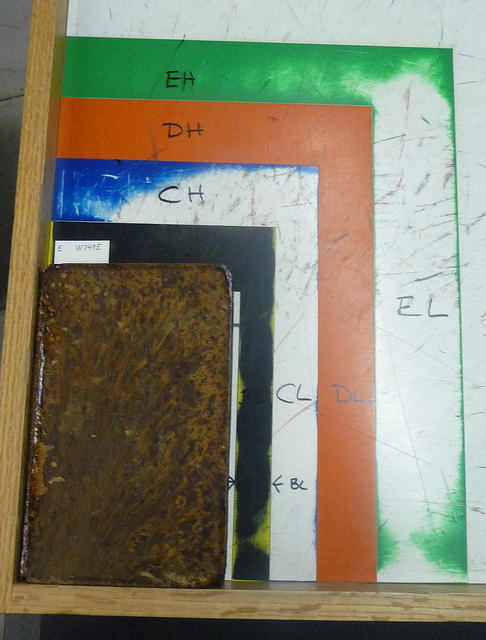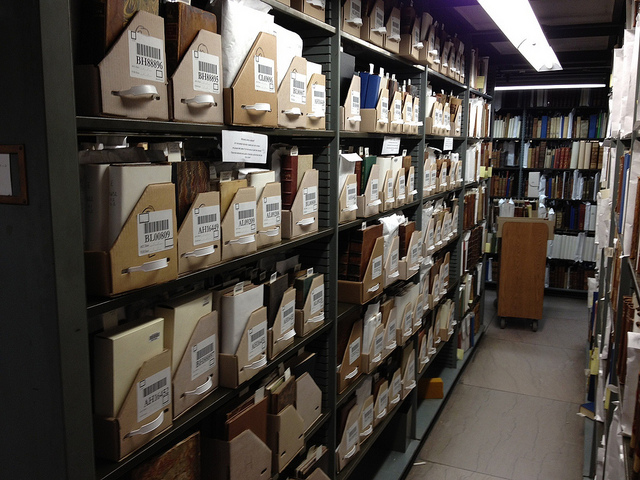The Rubenstein Renovation team has been spending a lot of time thinking about, planning for, and generally fretting over how we are going to move portions of our priceless collection of rare books to the Library Service Center (LSC) in preparation for the renovation. Right now we are estimating that between 150,000 and 200,000 print items will be sent to LSC. Books at the LSC are stored in book trays, which are made of cardboard and resemble a box that is open on two sides. We will be taking some of our books into our new enabling space as well, but these will not be packed into trays.
In late 2011, we decided that we would load the books into book trays ourselves for two key reasons. First, loading the books ourselves will make processing the books into the LSC a much faster process, because our staff at LSC will not have to load the books. This means the books will be available to the public sooner. Secondly, we believe it will be safer for the books to travel off campus already loaded into trays as opposed to traveling on rolling book trucks.

This whole project was a very abstract plan floating out on the move horizon until the last few weeks, when we have started traying books in earnest. First, we had to find a place to store hundreds (eventually thousands) of flat and assembled book trays in the library. Second, loading books into trays is not nearly as simple as it sounds. The trays come in 5 sizes and each size has a high and low sub-size to account for book height. It is essential to match the books to the correct tray size for safe storage (books of varying sizes should not be loaded into the same tray). However there are many nuances to this process. For example, some of our books fit one size in width, but another in height and so on and so forth. Additionally the trays need to be full, but not over or under filled.

There are also a number of our books have been placed in Tyvek envelopes by our conservation team for safe keeping. As these books are trayed, we have to transfer call numbers and barcodes from the book flags to the envelope. Finally, we are also tracking the barcodes of each volume and tray for record keeping and easy retrieval after the move. All in all, this is a very involved process.

Currently the books are not scheduled to move to LSC until next winter, but we are starting now because as you can guess, book traying can be a time consuming process. Unfortunately, the downside of being so pro-active is that it will take us longer to retrieve our books when patrons request them. We do have strategies in place to minimize retrieval time, and we are extremely thankful for our patrons’ patience. This is a lot of work for everyone in the Rubenstein, but we believe this is the best way to move our books. The end result will be a collection that is safe, ready to move, and quite impressive-looking as well! For more pictures of the Rubenstein move, check out our Rubenstein Renovation set on Flickr.
Post contributed by Molly Bragg, Collections Move Coordinator.



3 thoughts on “So, how do you move over 150,000 rare books?”
Comments are closed.